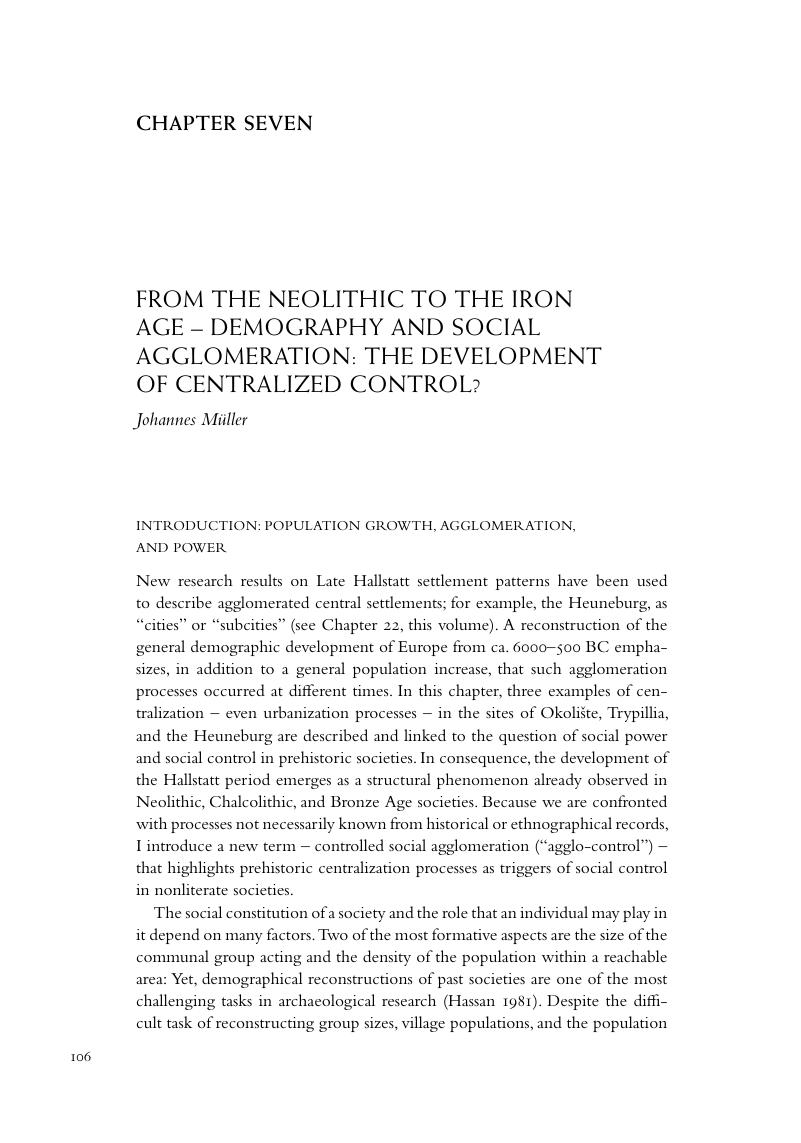Book contents
- Eurasia at the Dawn of History
- Eurasia at the Dawn of History
- Copyright page
- Contents
- Figures
- Tables
- Contributors
- Introduction
- Part I Between Myth and Logos
- Part II The Development of Social Differentiation
- Chapter Five The Neolithic Conquest of the Mediterranean
- Chapter Six Low-Density Urbanism: The Case of the Trypillia Group of Ukraine
- Chapter Seven From the Neolithic to the Iron Age – Demography and Social Agglomeration: The Development of Centralized Control?
- Part III Approaching Social Complexity
- Part IV Urbanism through the Ages: Concepts, Models, and Definitions
- Part V Ancient Civilizations at the Turn of the Axis
- Part VI Times of Connectivity: The Mediterranean on the Move
- Part VII Early Urban Cultures from South to North
- Part VIII Changing Symbols, Changing Minds?
- Index
- References
Chapter Seven - From the Neolithic to the Iron Age – Demography and Social Agglomeration: The Development of Centralized Control?
from Part II - The Development of Social Differentiation
Published online by Cambridge University Press: 28 March 2017
- Eurasia at the Dawn of History
- Eurasia at the Dawn of History
- Copyright page
- Contents
- Figures
- Tables
- Contributors
- Introduction
- Part I Between Myth and Logos
- Part II The Development of Social Differentiation
- Chapter Five The Neolithic Conquest of the Mediterranean
- Chapter Six Low-Density Urbanism: The Case of the Trypillia Group of Ukraine
- Chapter Seven From the Neolithic to the Iron Age – Demography and Social Agglomeration: The Development of Centralized Control?
- Part III Approaching Social Complexity
- Part IV Urbanism through the Ages: Concepts, Models, and Definitions
- Part V Ancient Civilizations at the Turn of the Axis
- Part VI Times of Connectivity: The Mediterranean on the Move
- Part VII Early Urban Cultures from South to North
- Part VIII Changing Symbols, Changing Minds?
- Index
- References
Summary

- Type
- Chapter
- Information
- Eurasia at the Dawn of HistoryUrbanization and Social Change, pp. 106 - 124Publisher: Cambridge University PressPrint publication year: 2017
References
- 7
- Cited by



